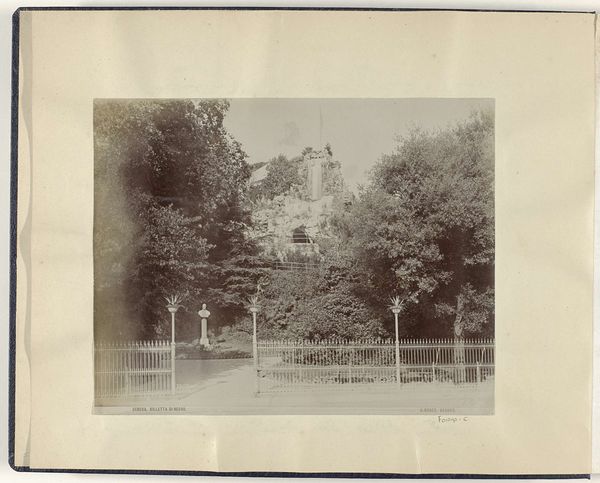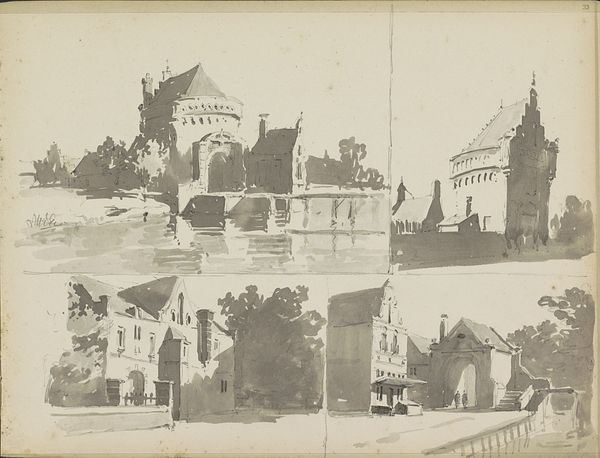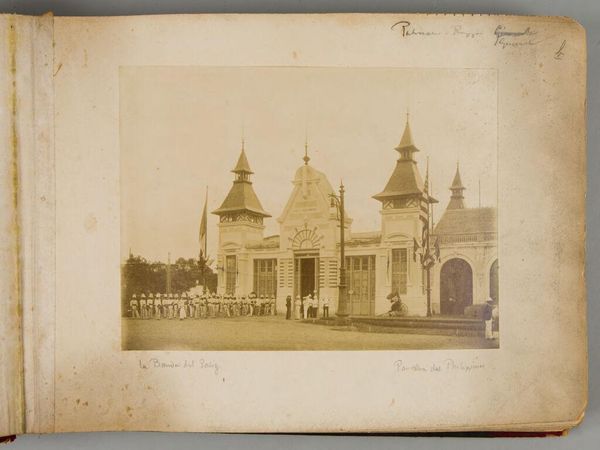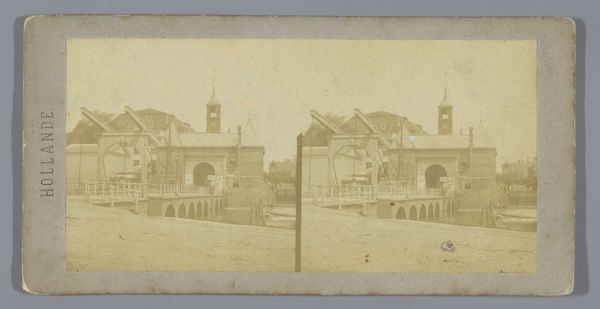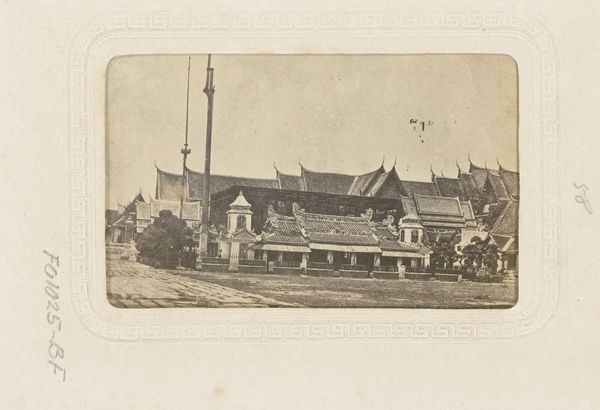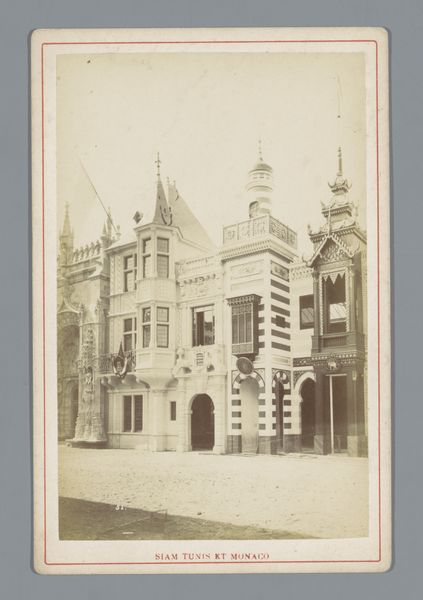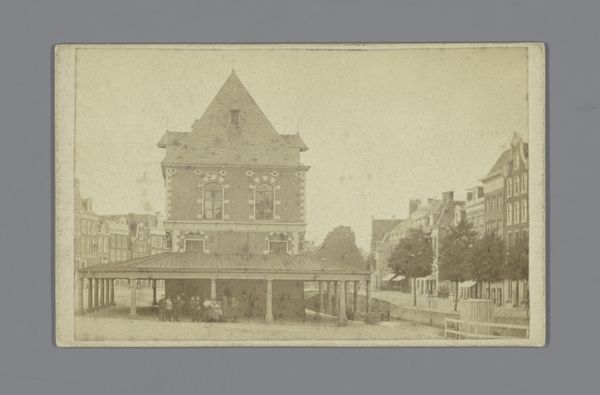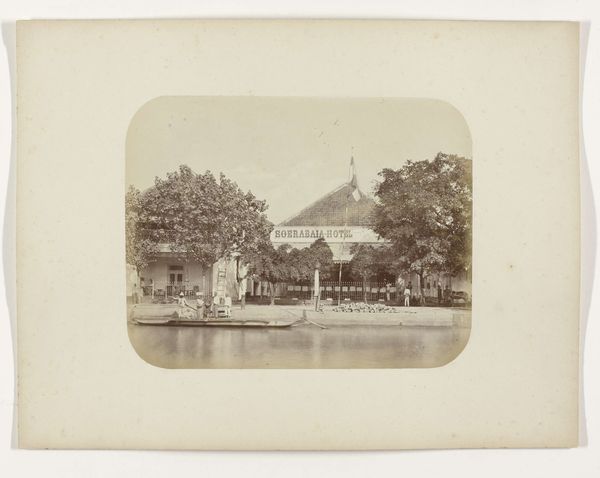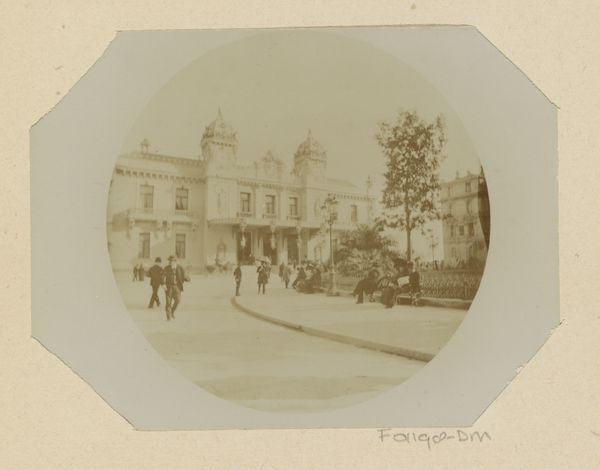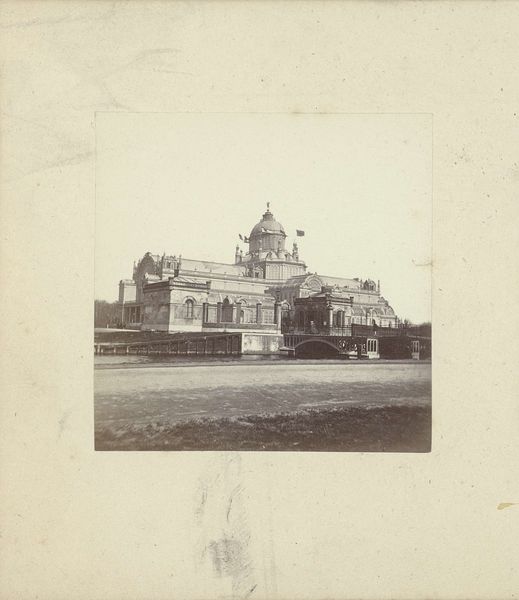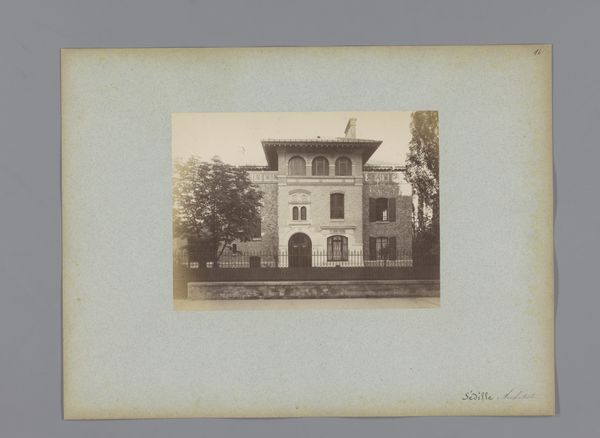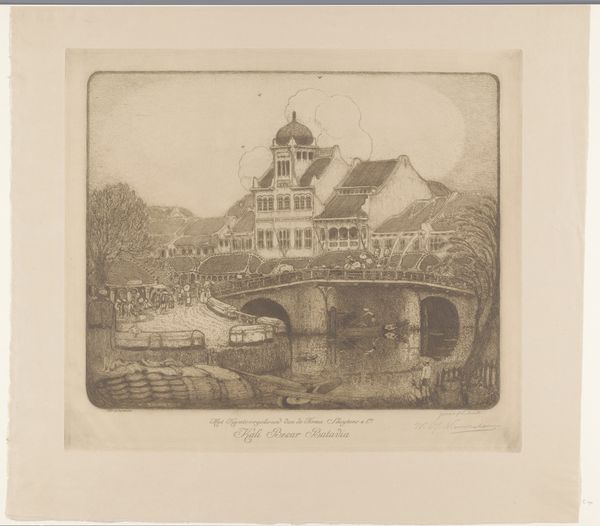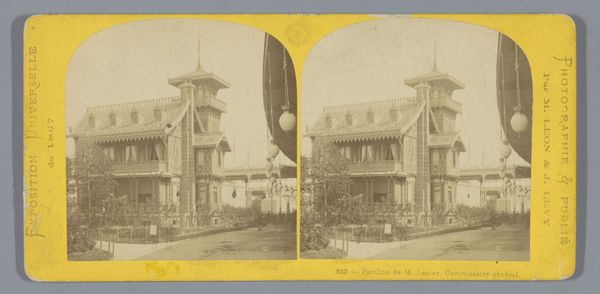
Gezicht op paviljoens van San Marino en de Sociëté Générale tijdens de Wereldtentoonstelling van 1900 in Parijs 1900
0:00
0:00
photography, gelatin-silver-print
#
photography
#
orientalism
#
gelatin-silver-print
#
cityscape
#
post-impressionism
Dimensions: height 105 mm, width 81 mm
Copyright: Rijks Museum: Open Domain
Curator: Here we have a gelatin-silver print from 1900 by M. Ducouret, titled "View of the Pavilions of San Marino and the Société Générale during the 1900 World's Fair in Paris." Editor: Well, my first thought is of a memory, faded and sepia-toned, a ghost of a time. It's like seeing a dream of the future from the past. Slightly melancholic, isn't it? Curator: Indeed. The sepia tones evoke a sense of nostalgia, aligning with the era’s photographic conventions. The World's Fair itself was a showcase of progress, yet the image captures a stillness, an almost ghostly presence of attendees. Note the juxtaposition of architectural styles, especially the hints of Orientalism popular at the time. Editor: You're right, that Eastern influence is subtle, but it is there in the pagoda-like structure on the right. There’s something odd about its symmetry though— it almost feels staged. Almost like those early postcards that romanticized the "exotic" East for Western consumption. A pre-packaged dream. Curator: That's a pertinent point. The image operates on multiple levels; as a record of an event, a demonstration of modernity through photography, and an indicator of cultural biases through the selective representation of world cultures. Editor: And everyone milling around feels like a mirage! I guess the slower exposure times back then turned crowds into these blurry shapes – unintentional surrealism. It makes the architecture feel eternal. It’s kind of amusing that technology trying to capture the modern, unintentionally emphasized its fleeting nature. Curator: Exactly. The "fleeting crowd" enhances the architecture into a more solid symbolism of civic achievement. Moreover, that octagonal framing, rather than a plain square, sets the image off balance. The little tears and markings on the print give it character too, as if carrying the burden of cultural memory over the decades. Editor: Almost makes you wish you had been there, just to experience the spectacle of the Fair – the sheer optimism of it all. Though maybe some of that dream is best left undisturbed... or at least viewed from a safe distance in sepia tones! Curator: I concur. A photograph like this reminds us of the past's selective, constructed view of progress and cultural exchange—valuable in considering how we create and perpetuate our own visions today.
Comments
No comments
Be the first to comment and join the conversation on the ultimate creative platform.
